What the world's airports used to look like
Journey to the past
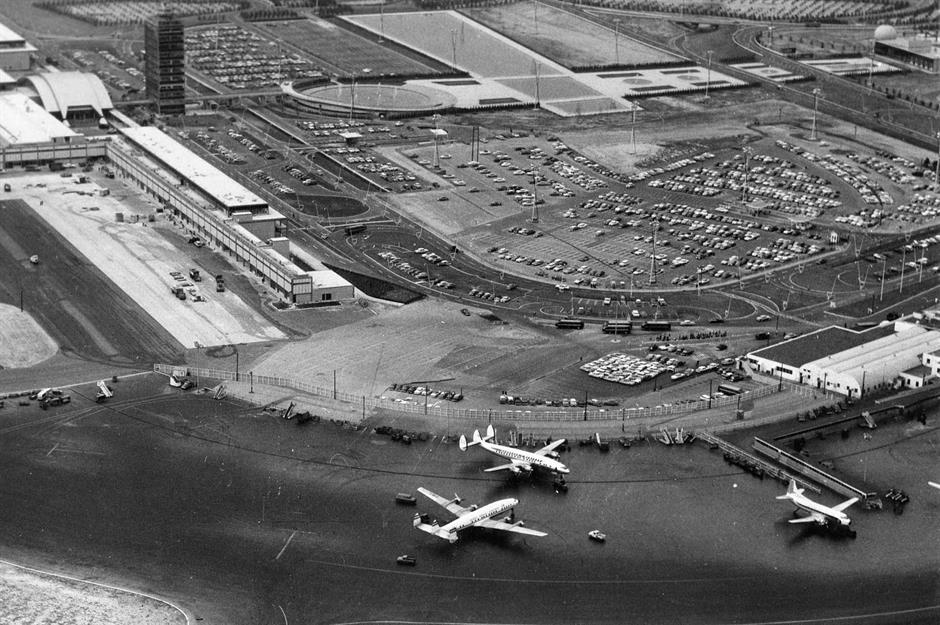
Any keen traveller will spend a fair amount of time in airports throughout their lifetime. But it has taken decades for some of the busiest transport hubs to look the way they do now. Here, we take a trip down memory lane to trace the changes of some of the world's best-known airports.
Click through the gallery to see amazing historic photos that show how the world's most iconic airports once looked...
Amsterdam Airport Schiphol, the Netherlands
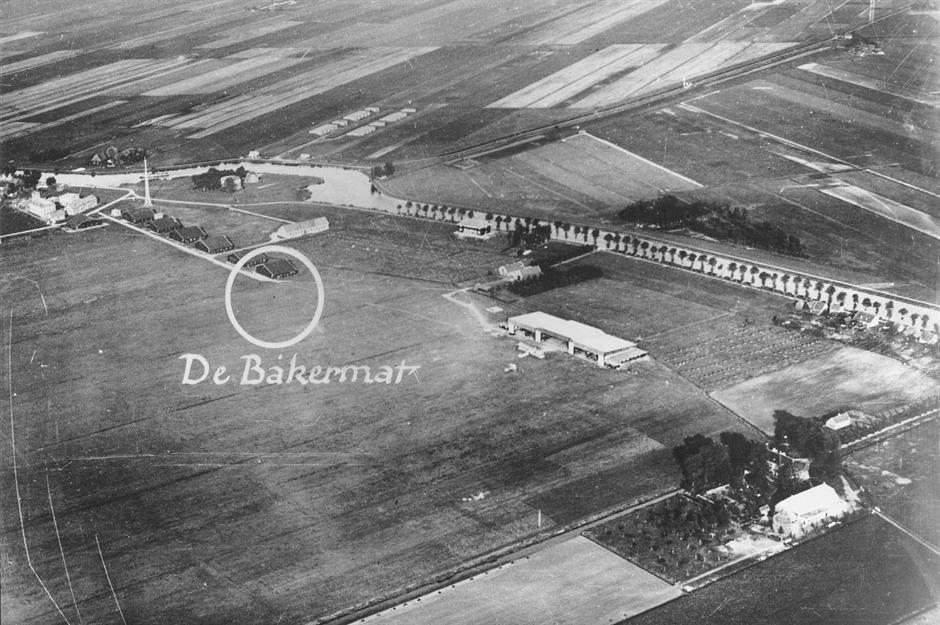
One of Europe’s busiest airports, Amsterdam Airport Schiphol (AMS) was first established in 1916. At that time, it was just a handful of small wooden structures on a stretch of muddy land, used as a military airfield.
In 1920, the first scheduled KLM aircraft, carrying just two passengers, touched down at the airport. It expanded rapidly as the 1928 Amsterdam Olympics approached. The field and access roads were improved, a new concrete platform was poured and the first terminal and air traffic control tower were built.
Amsterdam Airport Schiphol, the Netherlands
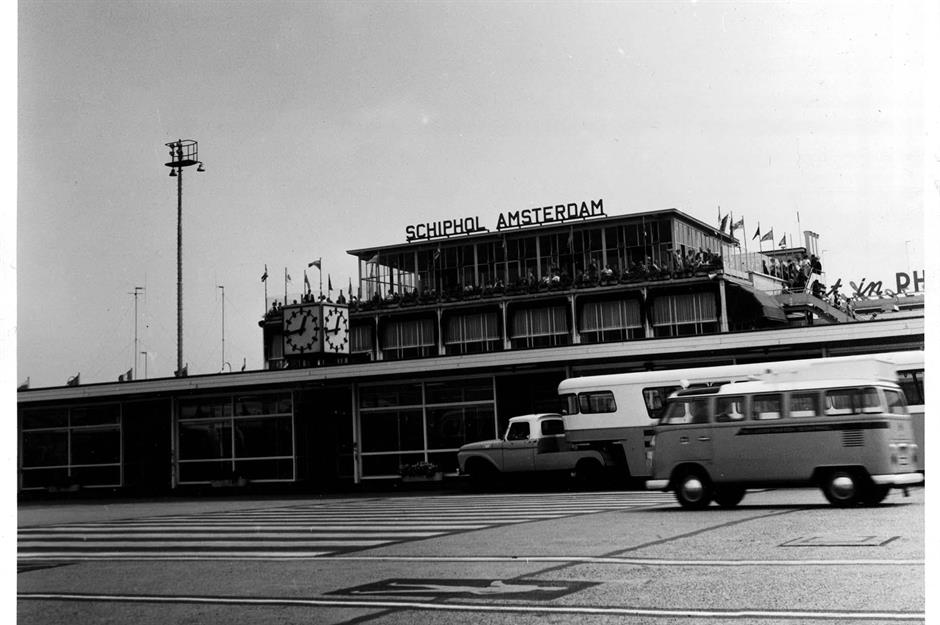
After Germany invaded the Netherlands, Schiphol became the most heavily defended German airfield in Europe. Because of its strategic importance, it was virtually destroyed in 1943 by an American bombing raid.
By the time World War II had ended, Schiphol was rebuilt and welcomed its first landing on 8 July 1945. During the 1950s, the city flourished as a tourist destination and the first tax-free shops opened at the airport in 1957.
Amsterdam Airport Schiphol, the Netherlands
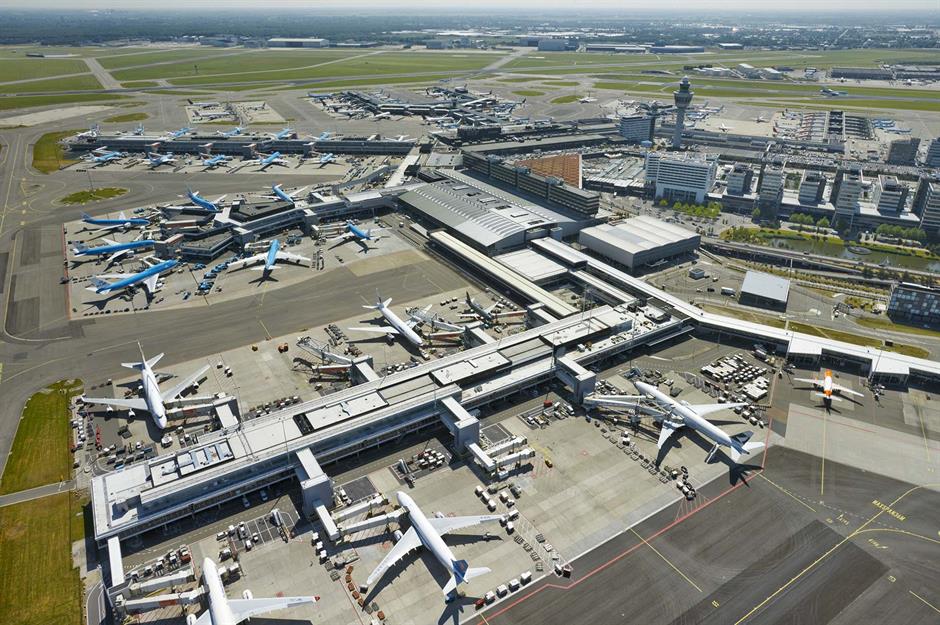
The airport continued to expand over the years, with terminals opening in 1967 and 1975. A new air traffic control tower came into use in 1991 – the tallest in the world at the time.
Today, Schiphol is one of the world’s oldest international airports still in operation, offering over 300 direct destinations from 120 airlines. Fun fact: Schiphol lies 13 feet (4m) below sea level at the bottom of what was once the Haarlemmer Lake.
London Heathrow, England, UK
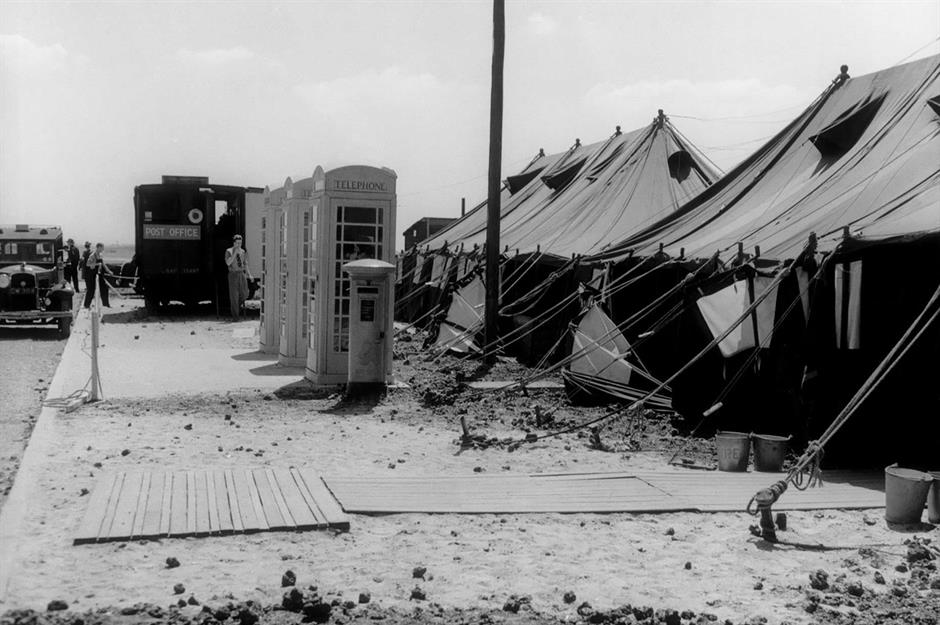
London’s biggest airport, Heathrow (LHR), first came to be in 1930, when a British engineer paid £15,000 ($20,400) for a plot of land to build a private airport. Then called the Great West Aerodrome, the airport consisted of one grass runway and a collection of humble buildings.
London Airport officially opened in 1946. Compared to the lavish lounges of today, passenger terminals were simple, consisting of ex-military marquees with no heating. There were, however, comforts such as floral armchairs, fresh flowers and a WHSmith (bookstore and newsagent).
London Heathrow, England, UK
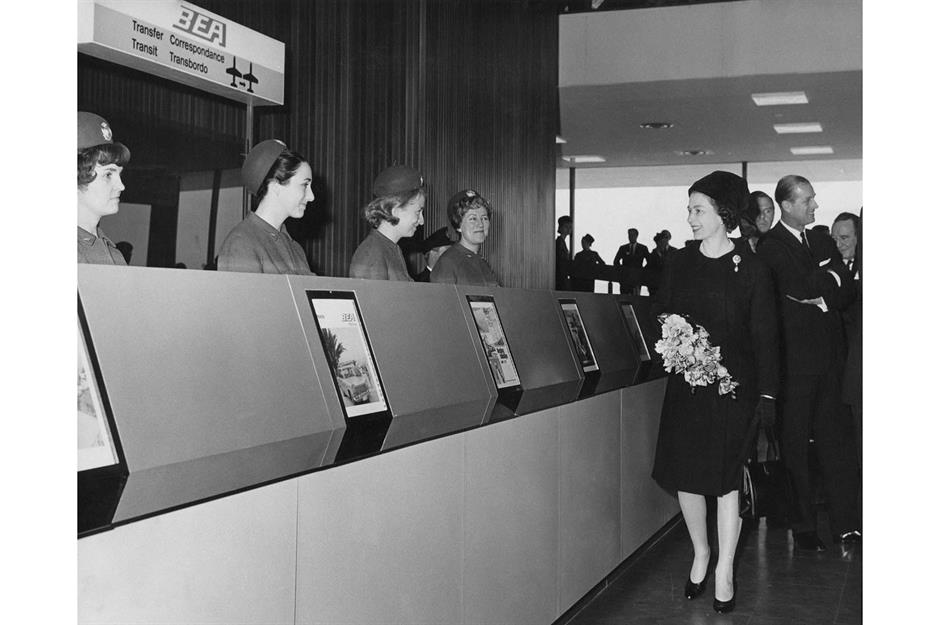
London Airport grew rapidly: 63,000 passengers travelled through the airport in its first year and the number rose to 796,000 in 1951. It was renamed Heathrow Airport in 1966. By the end of the 1970s, when Concorde and Boeing 747 ruled the skies, 27 million passengers used the airport annually.
There was a constant stream of renovations in the coming decades to cope with the demand, with multiple terminals opened, a London Underground link created and a rail service launched. The late Queen Elizabeth II (pictured) even visited to open Terminal 1 in 1969.
London Heathrow, England, UK
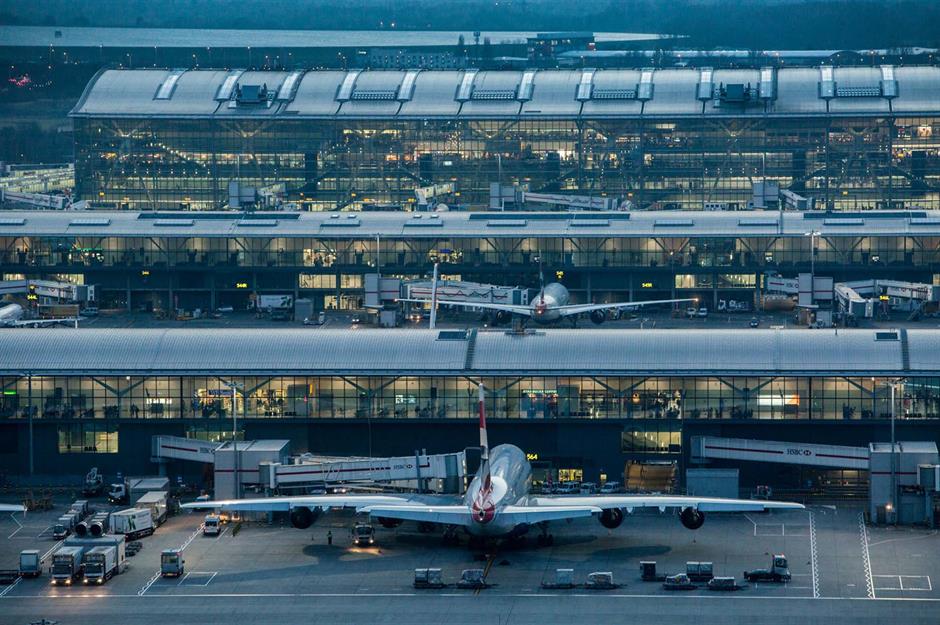
Today, Heathrow is one of Europe's busiest airports, serving more than 83 airlines flying to more than 203 destinations in 84 countries. A record 83.9 million passengers passed through in 2024, set to rise to 84.2 million in 2025. New York, Los Angeles and Dublin are among its most popular destinations.
After 47 years of service, Terminal 1 closed in 2015 to make way for the expansion of Terminal 2. Controversial plans for a third runway by 2035 look set to move ahead – this could take passenger numbers to 140 million.
Frankfurt Airport, Germany
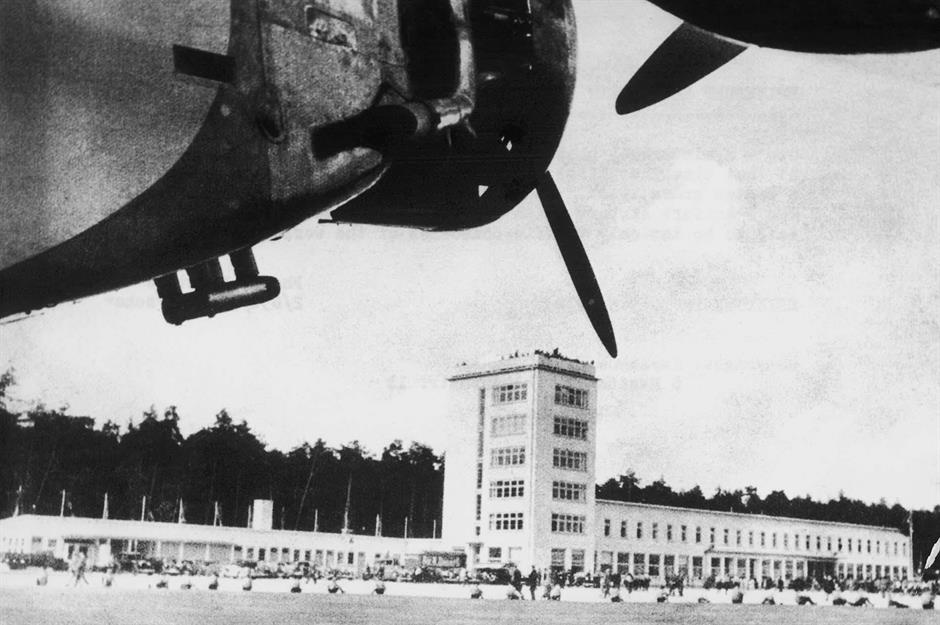
Initially a hub for airships, including the ill-fated Hindenburg, the first traces of an airport at this location existed as early as 1912. Plans to construct an airport were revived in 1933.
Three years later, a commercial airport (pictured) opened and formed the core of what would become Frankfurt Airport (FRA). The airport was completely destroyed during World War II. When the US Army took control, a new temporary runway was built.
Frankfurt Airport, Germany
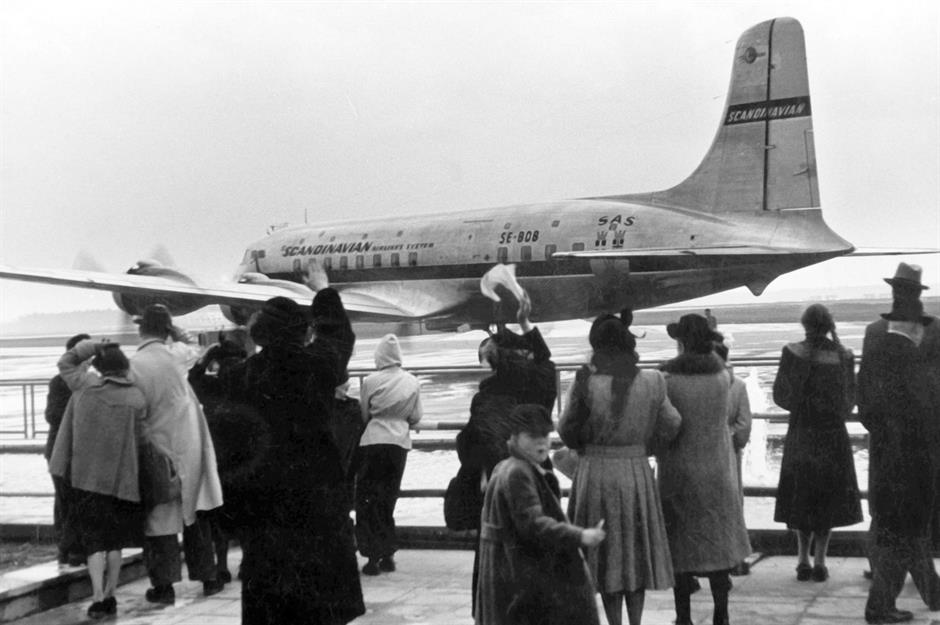
Frankfurt Airport boomed in the 1950s after the restrictions for German air travellers were lifted, with more than 400,000 passengers flying just a year later. Frankfurt emerged as a major airline hub in 1958, when a new terminal opened. By 1962, there was already a need to build an even larger terminal.
When Terminal 1 opened in 1972, the passenger offering improved, with restaurants and duty-free shops catering to international travellers spending longer at the airport. Pictured here is a Scandinavian Airlines flight leaving the ramp in the early 1950s.
Frankfurt Airport, Germany
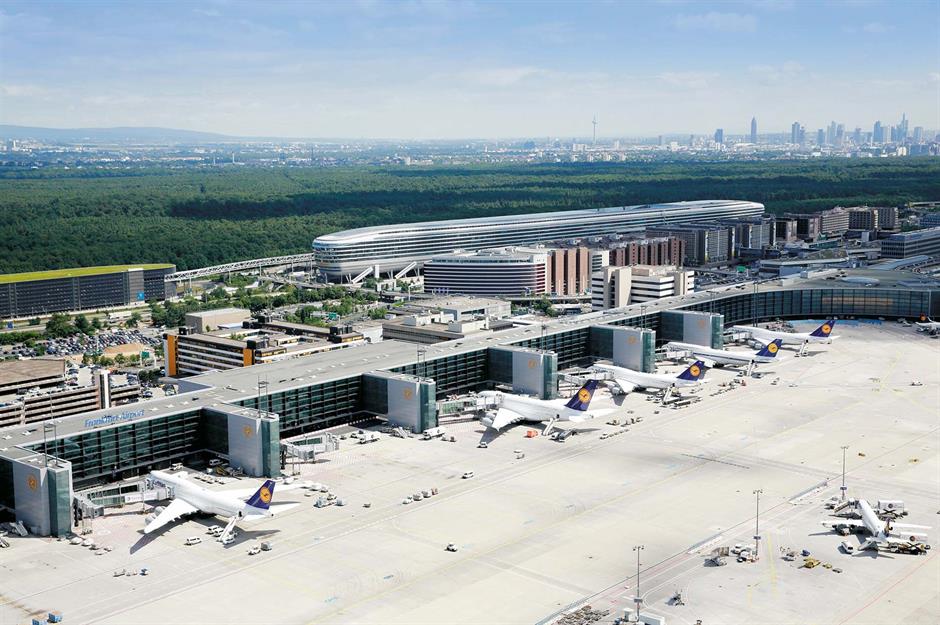
In the following years, the airport undertook renovations and improvements, including new runways and terminals. In 2024, the airport handled around 61.6 million passengers, with 99 airlines offering flights to 311 destinations in 98 countries.
Germany’s largest airport and one of Europe’s most important hubs, an estimated 168,671 travellers depart or arrive each day. The busiest ever day was on 30 June 2019, when 241,228 people passed through.
Dubai International Airport, UAE
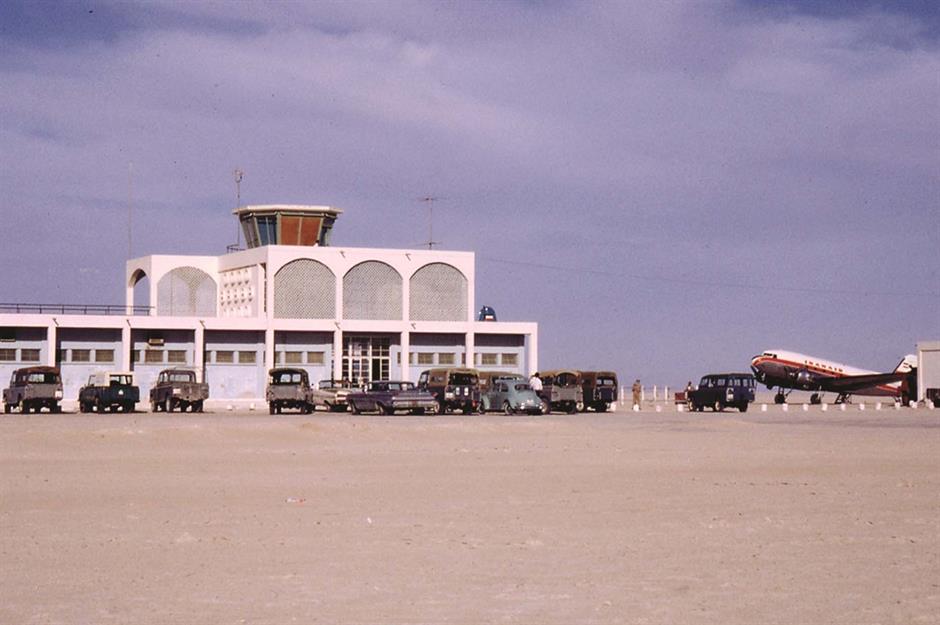
A major international hub and one of the world’s busiest airports, Dubai International Airport (DXB) has expanded rapidly over its relatively short history, with passenger numbers growing by an average of 13% each year.
Although DXB's history can be traced back to 1937 – when the British airline Imperial Airways operated four weekly Flying Boats – the airport properly opened in 1960 (pictured). By 1963, its first expansion happened, with the airport swapping its sand runway for modern asphalt tarmac.
Dubai International Airport, UAE
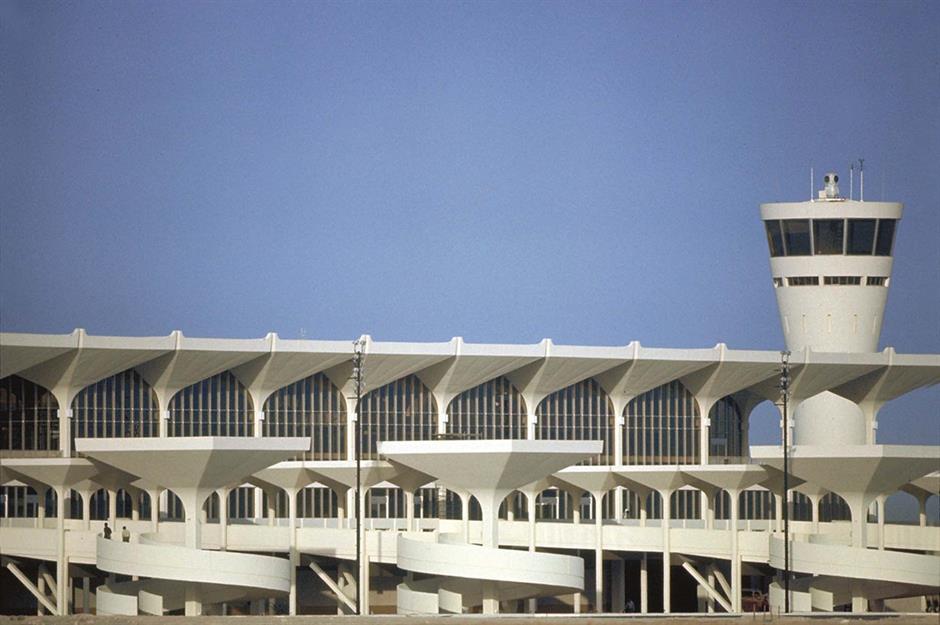
By the end of the 1960s, the airport accommodated nine airlines and flew to 20 destinations. In the 1970s, even grander expansions took place, with the launch of new terminal buildings and a control tower (pictured).
The airport has continued growing since the 1990s: terminals have been added and expanded, and the airport was connected to central Dubai via metro. A second airport, Al Maktoum International Airport (DWC), was constructed to support growing passenger numbers.
Dubai International Airport, UAE
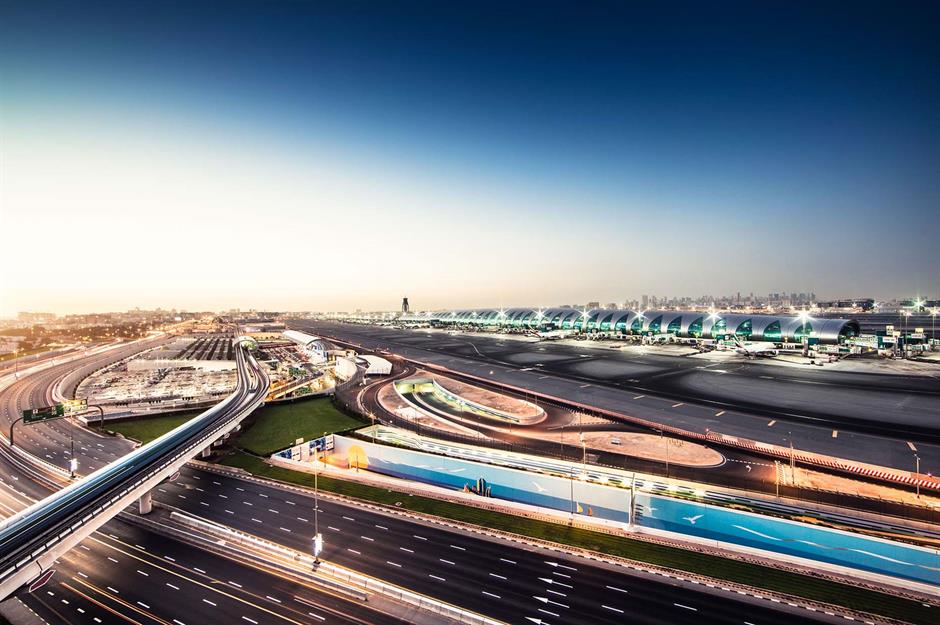
The airport now offers flights to 260 destinations on six continents with more than 100 airlines, making it the world’s busiest airport for international passengers. In 2024, it served a record 92.3 million passengers.
Smart gates were introduced in 2023, which allow pre-screened passengers to skip scanning their passport or queuing up at security. Biometric face-recognition systems and smart luggage scanners provide a speedier airport experience.
JFK International Airport, New York, USA
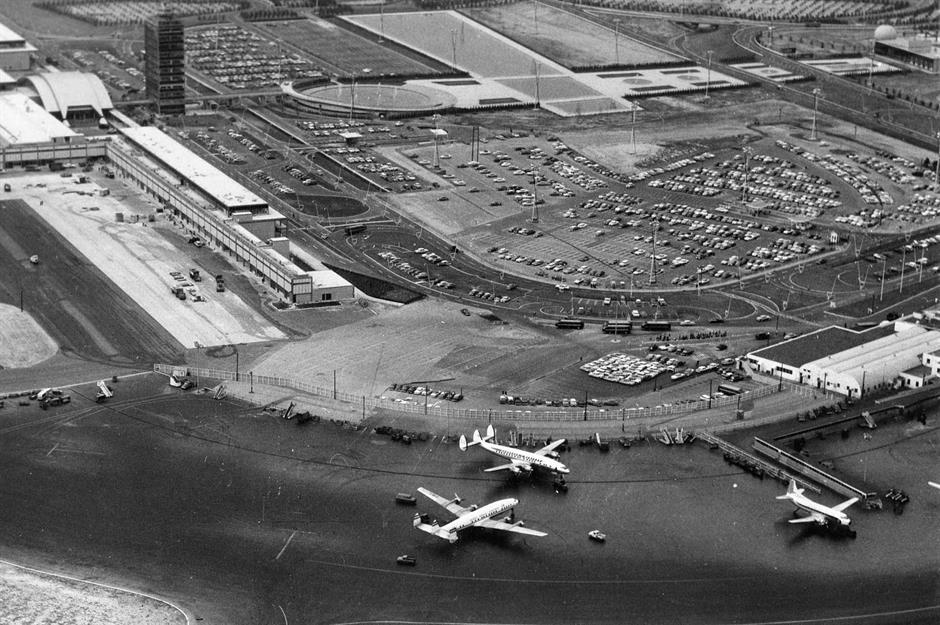
One of the world’s most famous airports, JFK actually began its life as a golf course. In 1941, the Idlewild Beach Golf Course was chosen as the site of a new airport serving New York City. The project was a sizable undertaking. It eventually opened as Idlewild Airport, with the first flight taking off in 1948.
It was renamed multiple times over the following years, getting its current name in 1963, shortly after the assassination of President John F. Kennedy. The airport is pictured here in 1957, following the completion of the International Arrivals Building.
JFK International Airport, New York, USA
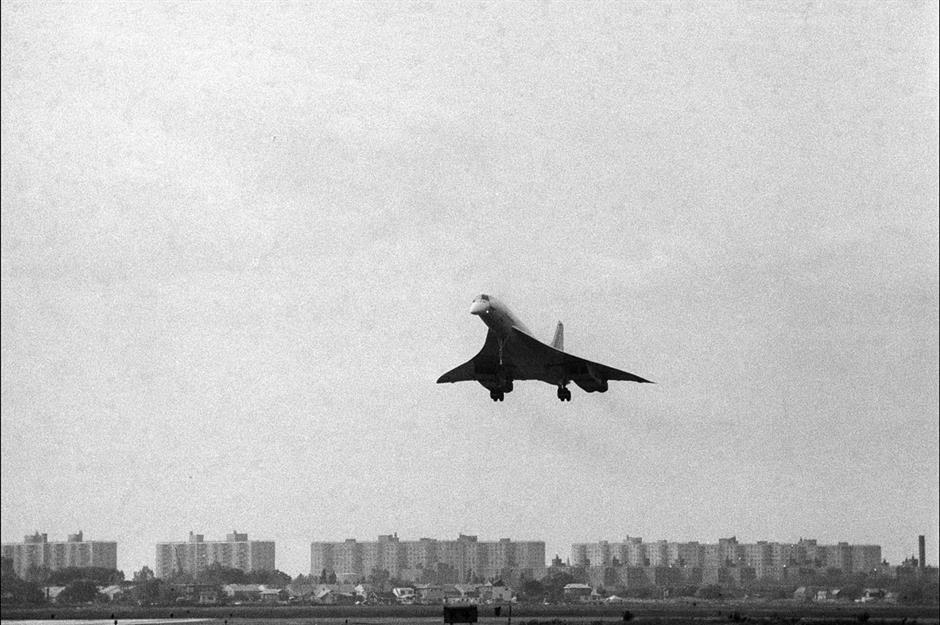
During the 1950s and 1960s, JFK experienced a boom, with airlines including United, American and Pan Am all opening terminals. By the late 1950s, around £173 million ($235m) had been spent on developing the airport.
It gained even more international fame in the 1970s, as trans-Atlantic supersonic flights on the Concorde (pictured) connected JFK with London and Paris. Minor redevelopments and expansions continued until the 1990s – Terminal 1 opened in 1998, and a new Terminal 4 replaced the International Arrivals Building in 2001.
JFK International Airport, New York, USA
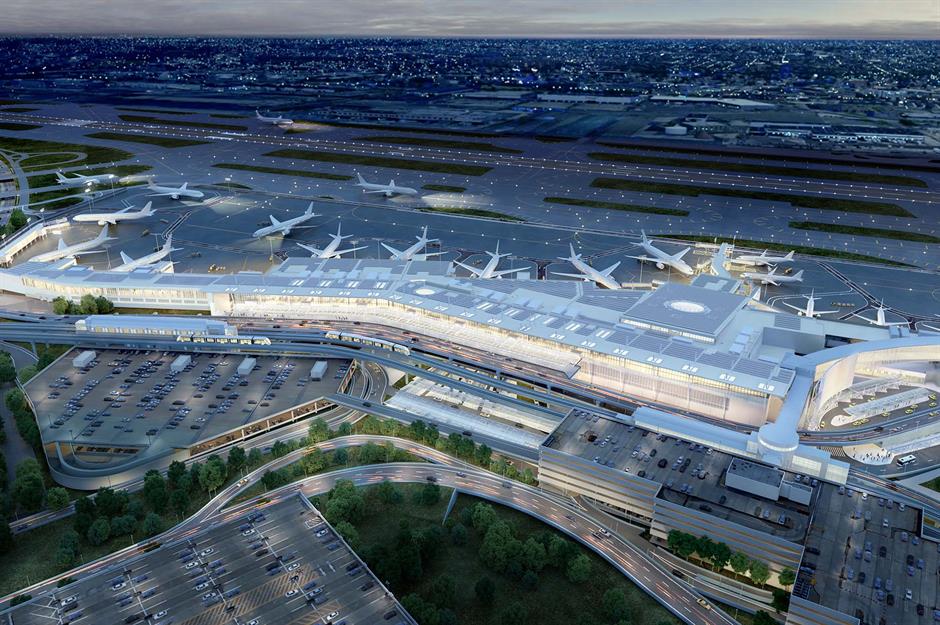
JFK has grown to become one of the world's most important airports, serving 63.3 million passengers in 2024. It's in the midst of a major refurbishment programme worth a staggering £14 billion ($19bn).
Construction is under way on a futuristic new Terminal One on the south side of the airport, a new Terminal 6 on the north end and expanded facilities at Terminals 4 and 8, as well as related infrastructure. It will open in phases from 2026.
Hong Kong International, Hong Kong
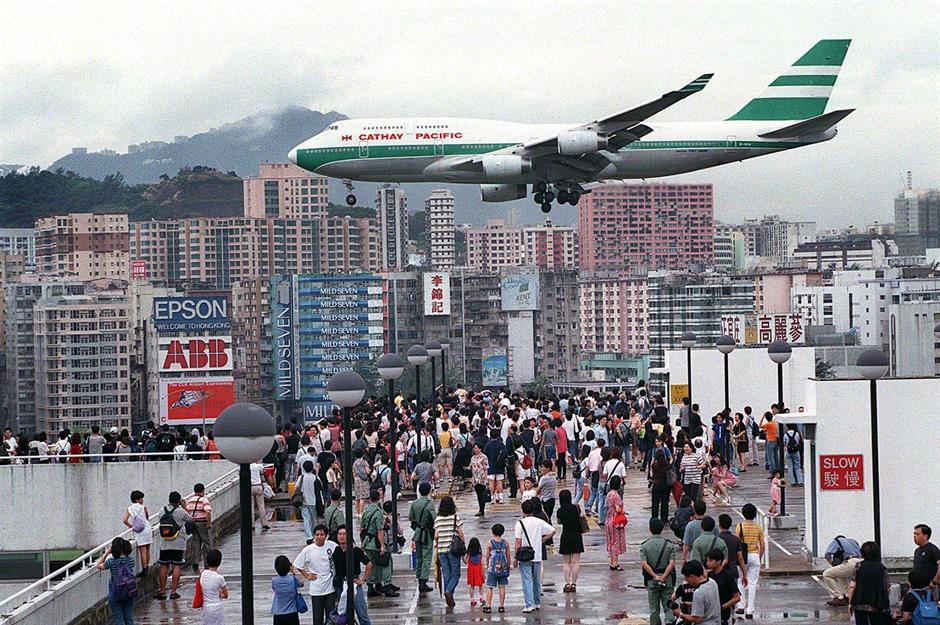
Only opened in 1998, island-based Hong Kong International (HKG) came into being as a replacement for the dangerous Kai Tak Airport (pictured). Kai Tak’s hair-raising landings were famous among pilots.
To land successfully, they had to make a perfectly executed sharp turn to line up with the runway and fly in between Hong Kong’s high-rise buildings. A study in the 1970s identified Chek Lap Kok island as a suitable location for a new airport, but construction didn't begin until 1991.
Hong Kong International, Hong Kong
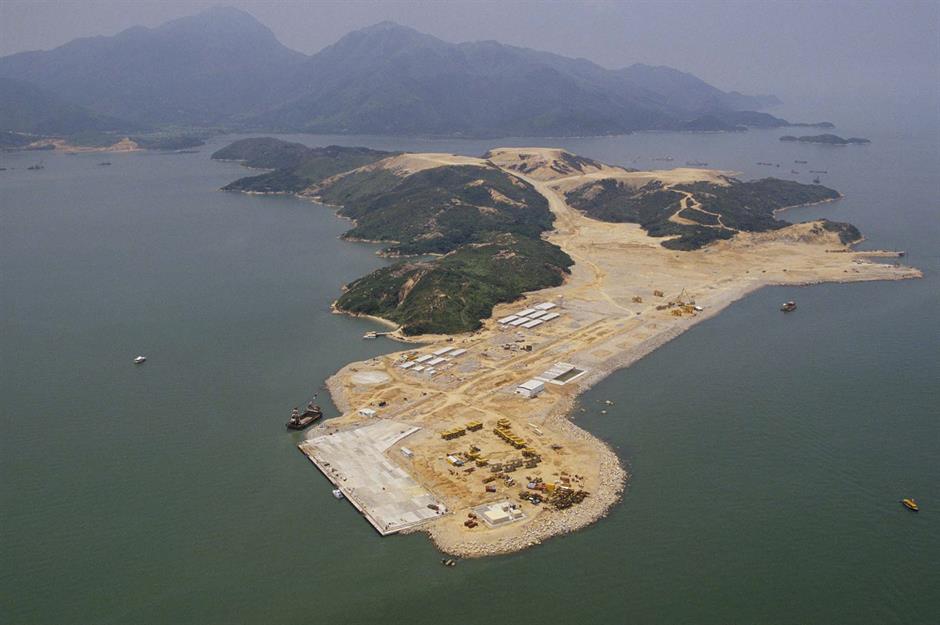
Mere hours after the opening ceremony, Air Force One, carrying President Bill Clinton, landed at the airport, making him the first foreign visitor to arrive. The airport began its operations a few days later.
A second terminal opened in 2007 to cope with the rising passenger numbers. It features a shopping mall, called Sky Plaza. Pictured here is the building site of the new airport in 1992.
Hong Kong International, Hong Kong
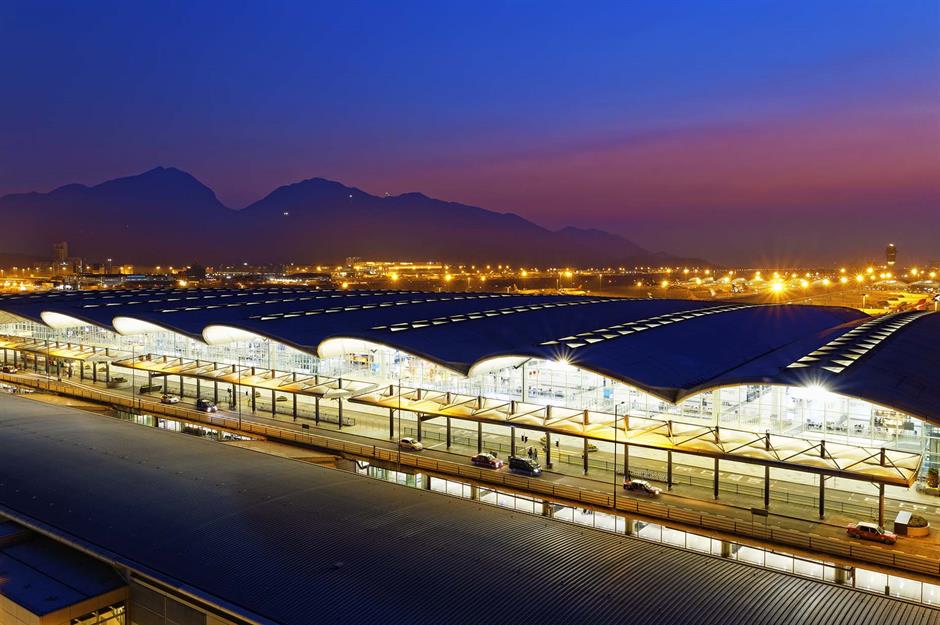
Covering an impressive area of nearly five square miles (13sqkm), the airport has 90 boarding gates which helped 53.1 million passengers reach 220 destinations in 2024. The airport is also one of the world's busiest cargo gateways, handling 4.9 million tonnes of cargo and airmail in 2024.
A 20-year blueprint called Master Plan 2030 was published in 2011, outlining further development, including construction of a third runway and expansion of the airport facilities.
Singapore Changi Airport, Singapore
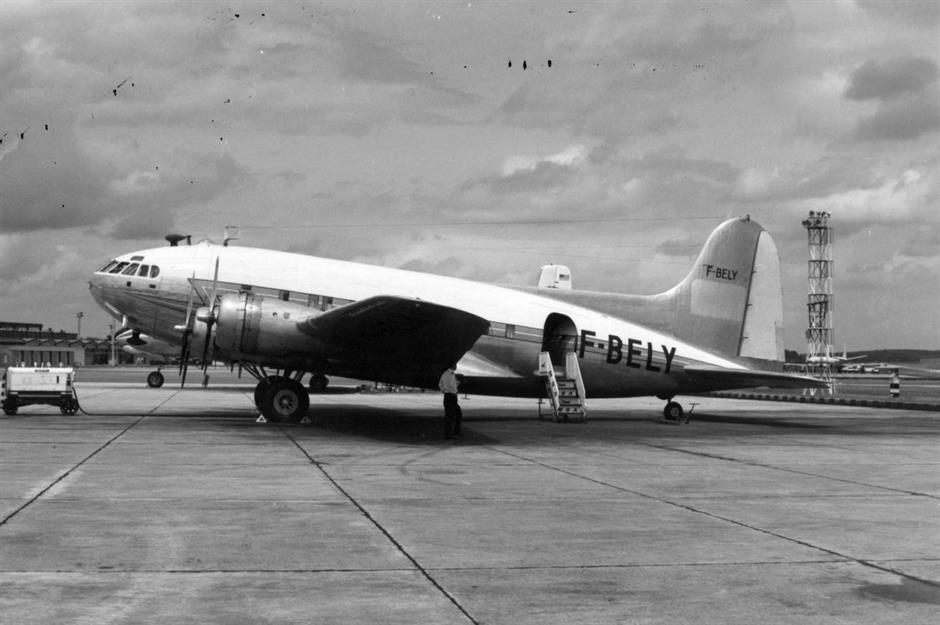
Just like Hong Kong, Changi isn't Singapore's first airport. Opened in the 1950s, Paya Lebar Airport served Singapore until 1980, when Changi opened and Paya Lebar was transformed into a military air base.
The popularity of international travel meant Paya Lebar had outgrown its home by 1975. So, the decision was made to move the airport to a new site, and the foundation stone of Terminal 1 was laid in 1979. Pictured here is a Boeing 307 at Paya Lebar Airport in 1967.
Singapore Changi Airport, Singapore
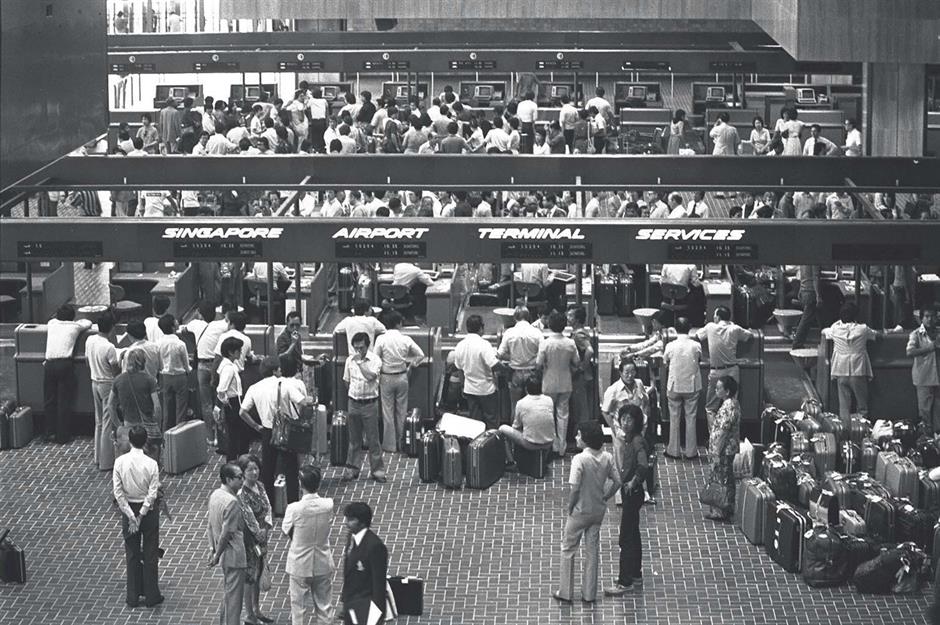
Almost immediately after opening, Changi started setting records and world firsts. In the 1980s, it was reportedly the first airport to introduce indoor gardens and the first to allow passengers to make free local telephone calls in transit. The world's first transit-area swimming pool opened here in 1995.
Just five years after the airport's opening, passenger numbers had already surpassed 10 million, so construction on Terminal 2 began. During its first decade, Changi also received its first Best Airport award, and it still regularly receives global aviation awards.
Singapore Changi Airport, Singapore

The Millennium brought massive changes to Changi, from new terminals to Jewel Changi Airport, a shopping and entertainment area that connects Terminals 1, 2 and 3. Serving nearly 68 million in 2024, Changi has more developments on the way.
Terminal 5, bigger than the first three combined, is due to open in the mid-2030s. It is expected to handle 50 million passengers a year alone.
Hartsfield-Jackson Atlanta International, Georgia, USA
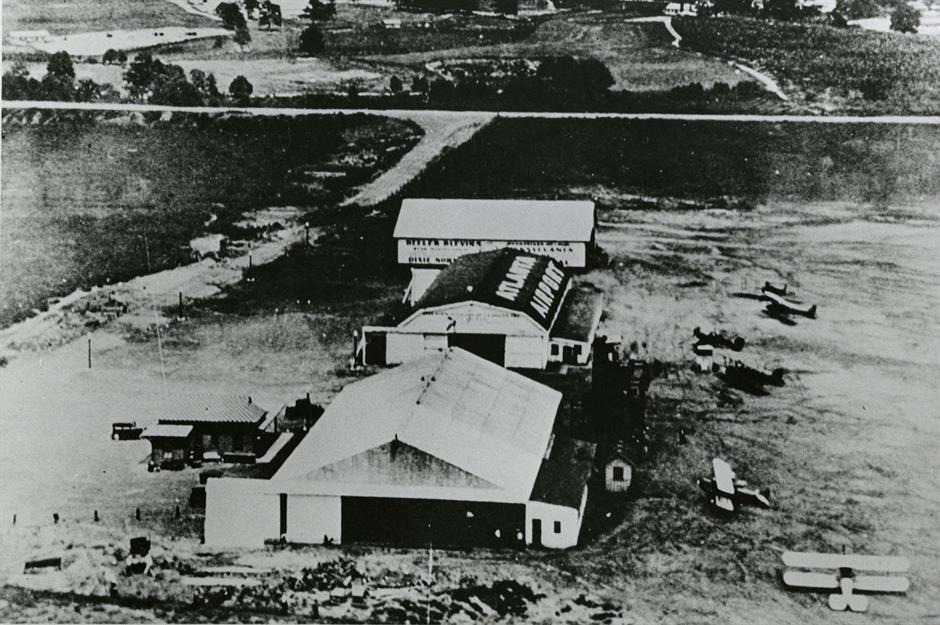
One of the world’s busiest airports for international passengers, Hartsfield-Jackson Atlanta (ATL) came into existence in the 1920s as Candler Field. The first commercial flight took place in 1926, and in 1942 it was renamed Atlanta Municipal Airport.
Passenger numbers grew rapidly after the war, so a temporary terminal was built out of salvage material from old military buildings. When it opened, it featured the longest ticket counter in the world. The airport is pictured here in 1927.
Hartsfield-Jackson Atlanta International, Georgia, USA
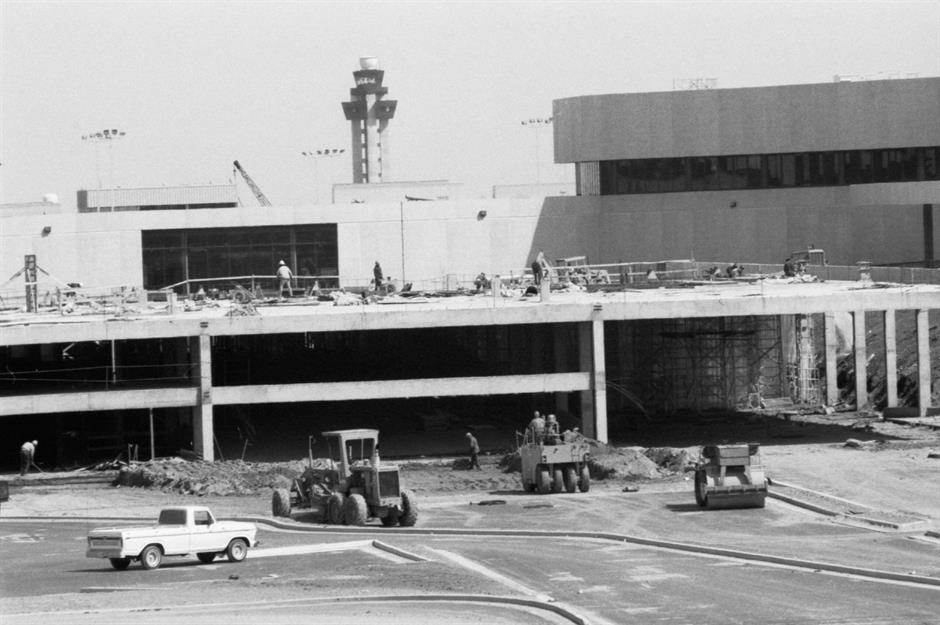
In anticipation of the passenger numbers the dawn of the Jet Age would bring, the country's largest single terminal opened in 1961. Although it was built to serve six million passengers a year, the terminal was already stretched beyond capacity in its first year.
Then the largest passenger terminal in the world, Midfield Terminal (pictured, under construction) opened in 1980 to accommodate up to 55 million passengers a year. Further renovations and expansion in the 1990s led to it becoming the world's busiest airport by passenger traffic.
Hartsfield-Jackson Atlanta International, Georgia, USA
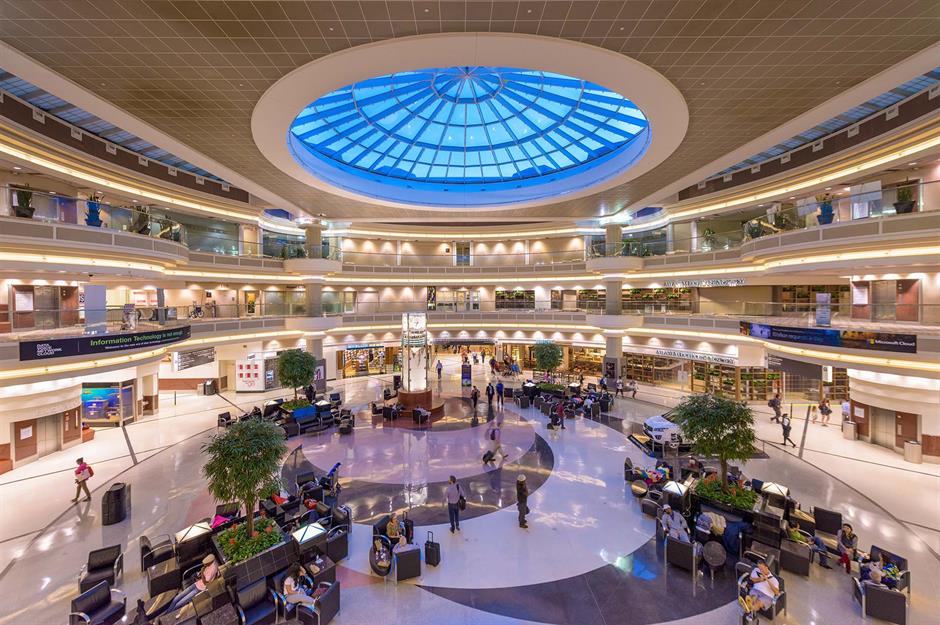
Later named after two of the city’s mayors, William B. Hartsfield and Maynard Jackson, Atlanta is now one of only three airports in the world with five runways. In 2024, passenger numbers reached 108.1 million, making it the busiest airport in the world.
The airport is within a two-hour flight of 80% of the US population and is Delta's biggest hub. Not only is it the state's top employer, but it also holds events such as the annual charity race, Mayor’s 5k on the 5th Runway.
Sheremetyevo International Airport, Moscow, Russia
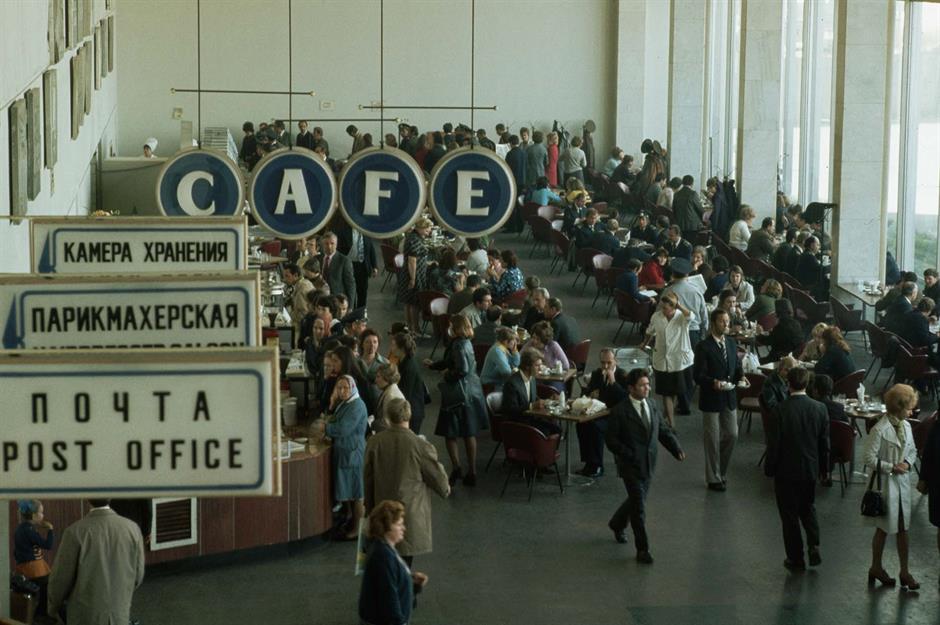
Originally a Soviet military base, Sheremetyevo (SVO) began life as a civilian airport in 1959, when the first flight landed from Saint Petersburg (then Leningrad). But it didn't officially open until 1960.
The first international flight (to Berlin Schönefeld Airport) took place in the same year. In the coming decades, a second runway was constructed, a new terminal opened, and another one was commissioned. Pictured is a cafe at the airport in 1975.
Sheremetyevo International Airport, Moscow, Russia
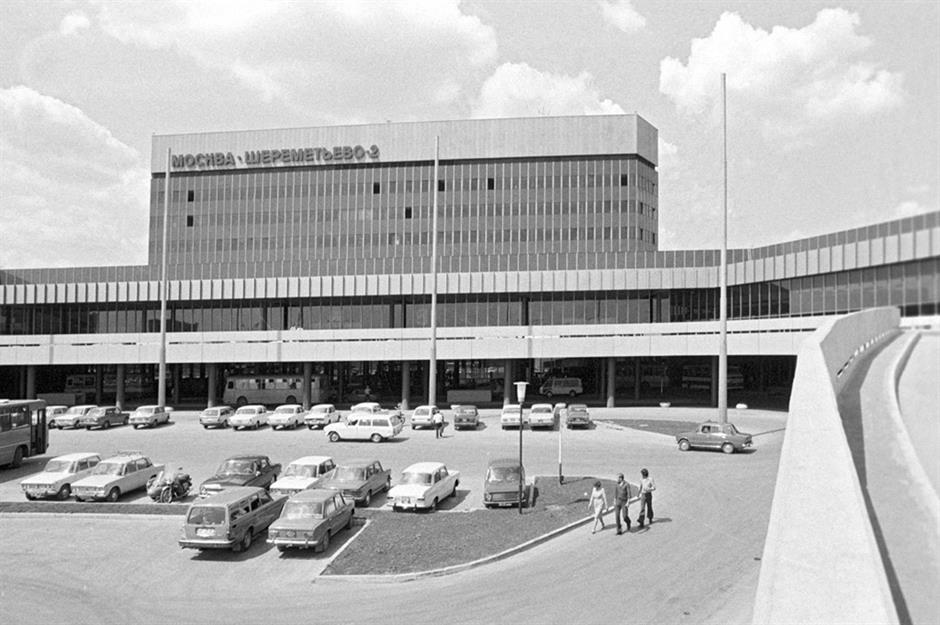
Sheremetyevo-2 (the second terminal, now known as Terminal F) opened in 1980 in anticipation of the Olympic Games in Moscow. The complex was designed to serve six million passengers annually. During the month of the Olympics, more than 460,000 foreign passengers passed through.
After the fall of the Soviet Union, the airport underwent several major redevelopments, including reconstruction of one of the runways, railway connections and the addition of several terminals.
Sheremetyevo International Airport, Moscow, Russia
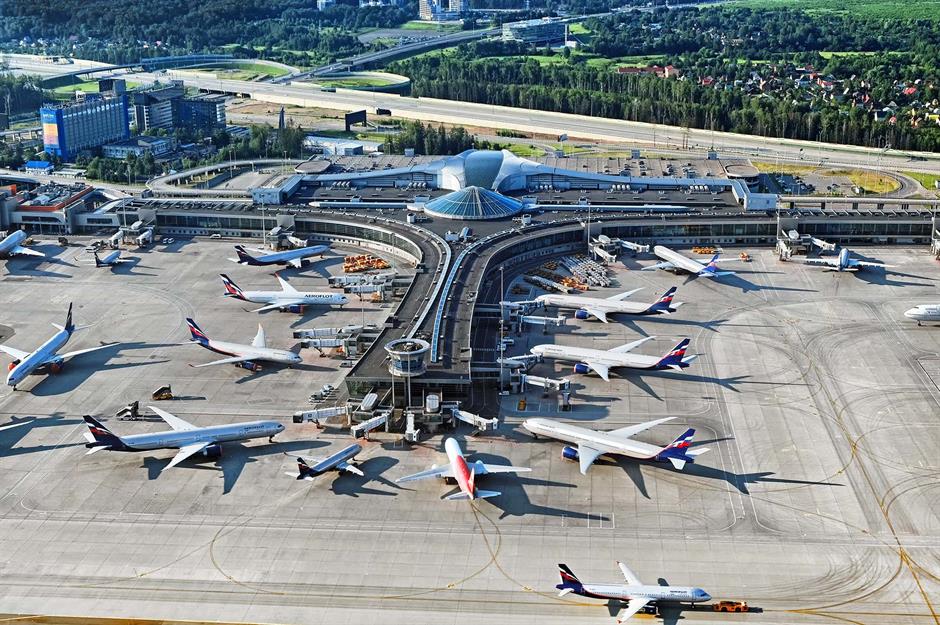
Today, Russia’s busiest airport comprises six terminals and is the main hub for the country's main carrier, Aeroflot. Its transit lounge was home to American-Russian technology specialist Edward Snowden for more than a month in summer 2023.
The airport was renamed Sheremetyevo Alexander S. Pushkin International Airport in 2019 to honour the late Russian poet on his 220th birthday.
Paris Charles de Gaulle Airport, France
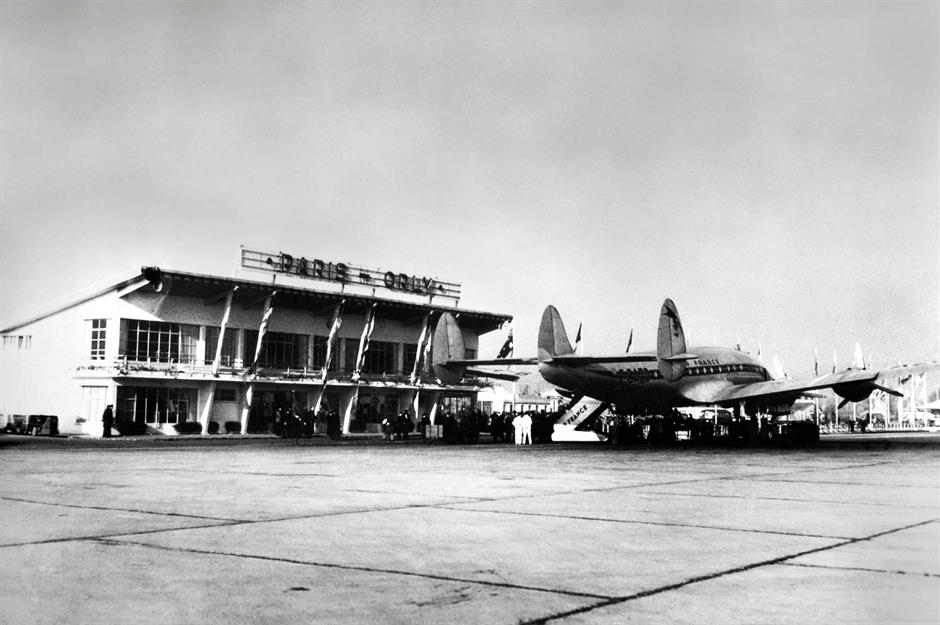
The title of the oldest airport in France goes to Paris-Le Bourget, which began commercial operations in 1919. But there’s no denying the importance Paris Charles de Gaulle (also known as Roissy or by its IATA code CDG) plays in Europe and the world.
Plans for the airport were drawn up as early as 1966, as Le Bourget and Orly (pictured in 1946) struggled to cope with growing passenger numbers.
Paris Charles de Gaulle Airport, France
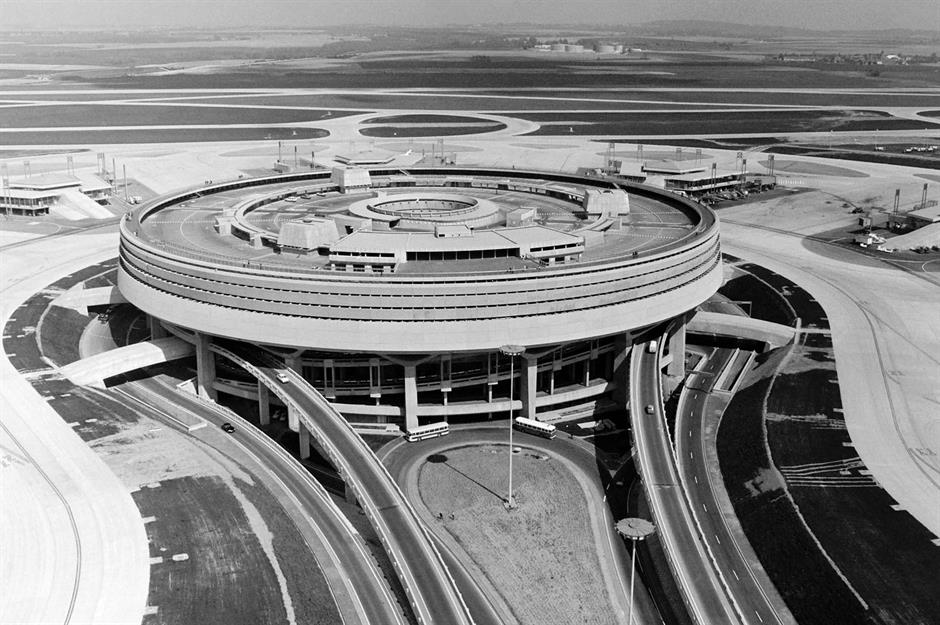
The revolutionary airport – designed as a central cylindrical 10-floor building with seven satellite buildings – opened in 1974. Soon after, the airport welcomed its first commercial flight, and all three Paris airports broke the 20 million passenger mark.
Several improvements and openings of new terminals followed in the coming decades to cope with the growing numbers of passengers, and it became the French home of supersonic service Concorde.
Paris Charles de Gaulle Airport, France
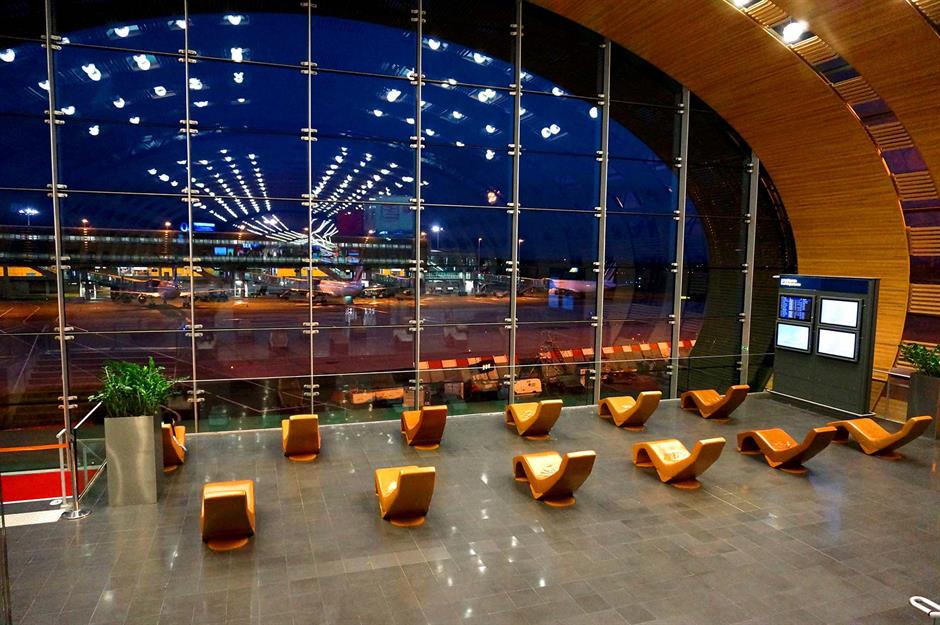
With flights to more than 300 destinations in 115 countries, CDG is one of Europe’s biggest hubs for passengers, freight and mail. In 2024, the airport served 70.3 million passengers.
A peculiar feature of the airport today is its terminals. There are technically three, but Terminal 2 now houses sub-terminals 2A to 2G. Plans for a new Terminal 4 were scrapped in 2021, following the impact of the pandemic and environmental concerns.
Los Angeles International, California, USA
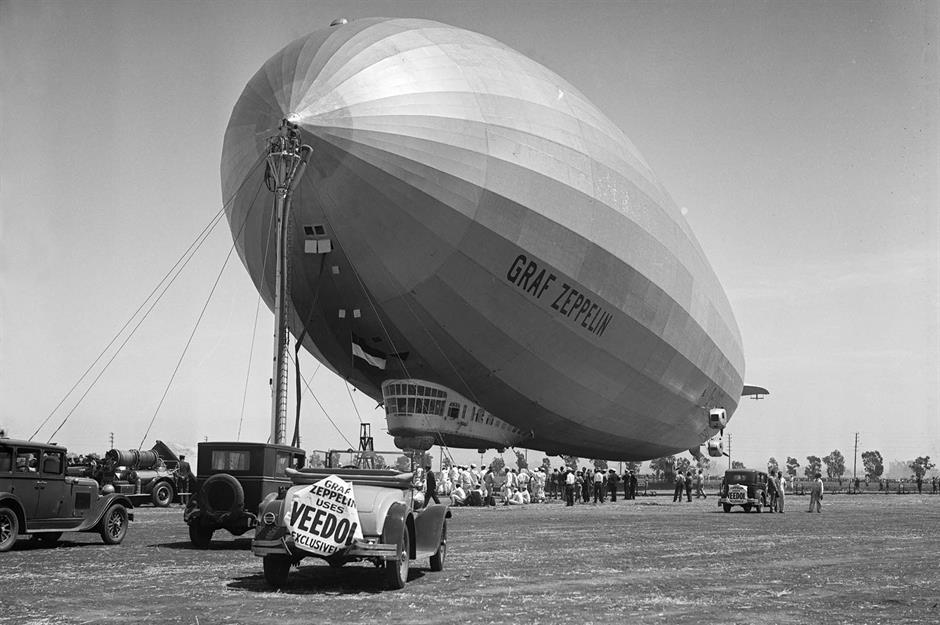
One of the busiest airports in the USA, Los Angeles International (LAX) was built on land once used to grow lima beans, wheat and barley. Then known as Mines Field, LAX began operations on 1 October 1928 and was later used by the military during World War II.
Commercial services began in 1946. Rather than the comfortable terminals of today, there were just four simple buildings and a cafeteria.
Los Angeles International, California, USA
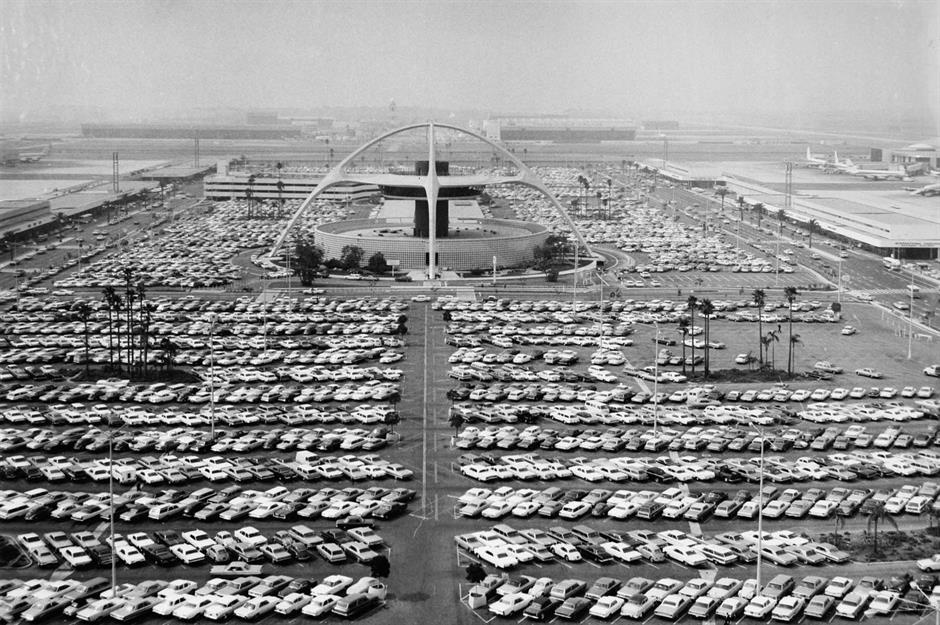
Previously known simply as 'LA'. the airport had its iconic 'X' added in 1947 as – due to rapid growth in aviation – airport identifiers expanded to three letters. LAX also gained a notable addition in 1961 that's still one of its most recognisable features.
Opened by Vice President Lyndon B. Johnson, the Theme Building (a designated Space Age monument) resembles a UFO that's landed on four legs. At the time it housed a restaurant, but now it's an observation deck.
Los Angeles International, California, USA
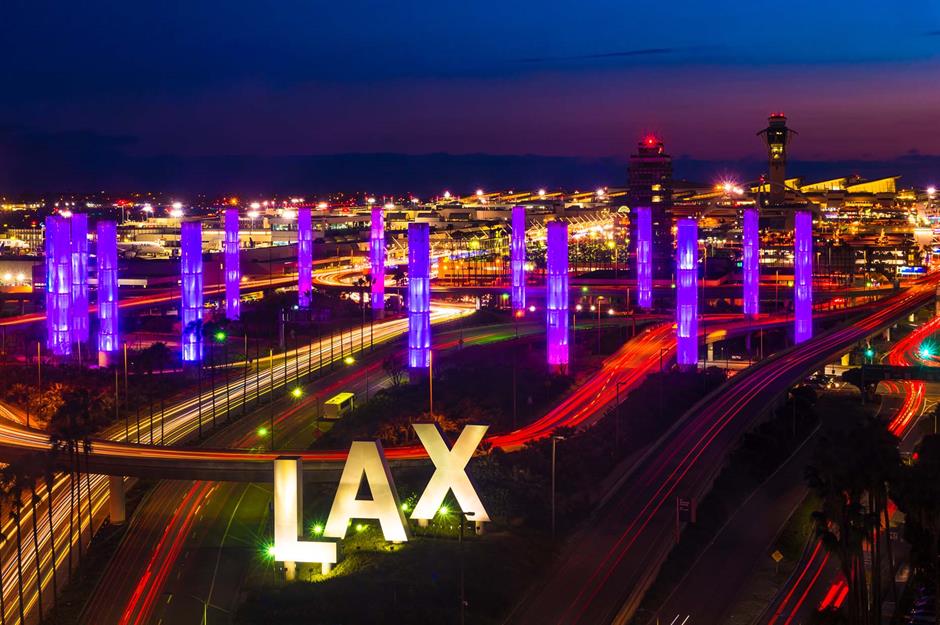
Today, LAX has nine terminals, plus a £1.7 billion ($2.3bn) Delta Sky Way that connects Terminal 3 via moving walkways. In 2024, the airport saw 76.6 million passengers pass through.
LAX banned the sale of plastic water bottles in summer 2023 to boost its sustainability credentials. It also offers a special PUP (Pets Unstressing Passengers) programme that provides stress relief and comfort to passengers with the help of therapy dogs in red 'Pet Me' vests.
Ciampino Airport, Rome, Italy
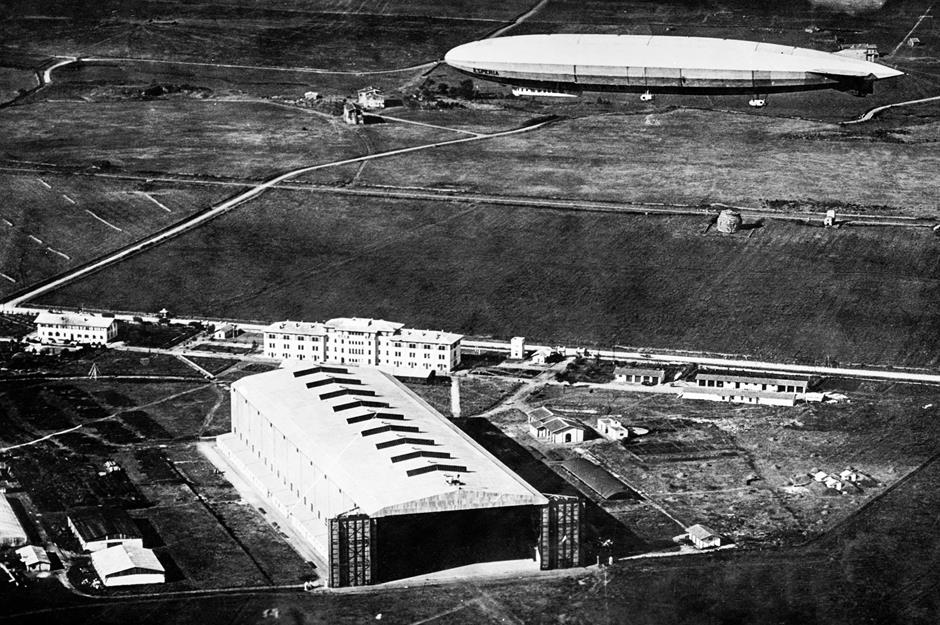
Rome’s Ciampino 'GB Pastine' Airport opened in 1916, a year after Italy entered World War I. Built to handle airships and other military aircraft, it was named after an Italian military airship commander, Giovan Battista Pastine.
Its location was dictated by the needs of airships. Just seven miles (12km) from Rome, the airfield avoided the troublesome winds common on the coast. Pictured is a rigid airship zeppelin docked at the airport sometime before 1920.
Ciampino Airport, Rome, Italy
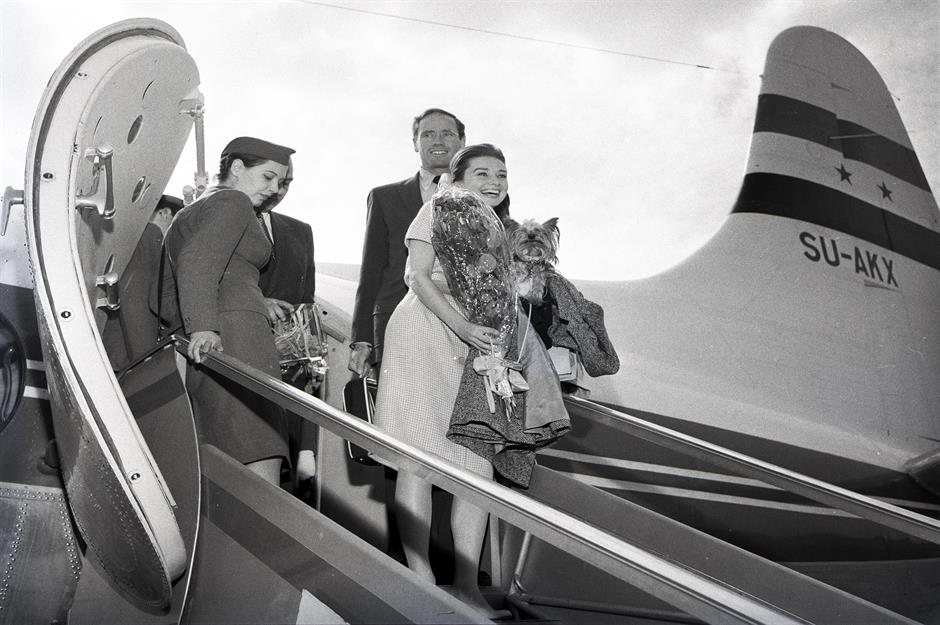
Ciampino continued to serve as a military airport until 1947. In the 1950s and 1960s, it became one of the most glamourous airports in Europe, with Hollywood stars like Charlton Heston, Richard Burton and Elizabeth Taylor jetting in to film at Rome’s famous Cinecitta film studios.
Several big-budget American movies were shot here, including Roman Holiday, Ben-Hur and Cleopatra, with Cinecitta becoming known as 'Hollywood on the Tiber'. This photo shows Audrey Hepburn arriving at Ciampino with her husband in 1959.
Ciampino Airport, Rome, Italy

After Leonardo da Vinci-Fiumicino Airport officially opened in 1961, Ciampino was mainly used by charter and executive flights. Revenue dwindled and the airport stagnated, before low-cost carrier Ryanair chose the airport as its Rome base in 2004 (pictured is CEO Michael O'Leary making the announcement).
Budget airlines helped to transform the airport into one of the fastest growing in Italy – so much so that increasing noise complaints have caused the Italian authorities to explore possibilities for a third airport for the Italian capital.
Hamburg Airport, Germany
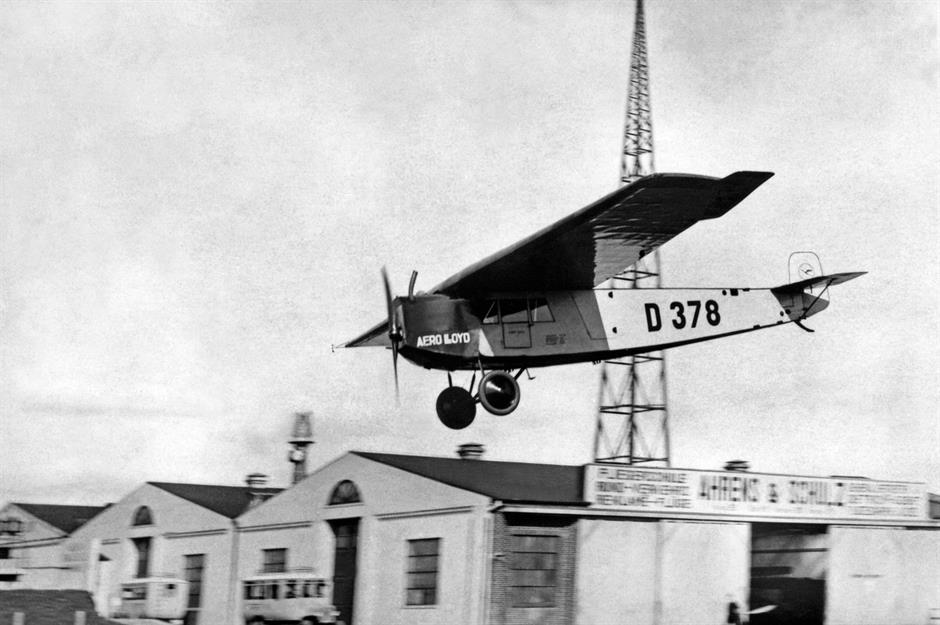
The origins of Hamburg Airport can be traced to 1910, when Count Ferdinand von Zeppelin gave a stirring speech in the city extolling the virtues of airship travel. Less than a year later, the Hamburger Luftschiffhallen GmbH company was formed.
By 1912, a huge airship hangar loomed over a 111-acre grassy site near the village of Fuhlsbuttel (now an urban quarter within Hamburg). In 1920, Dutch carrier KLM gave the site its first international flight route and the airport really started to take off.
Hamburg Airport, Germany
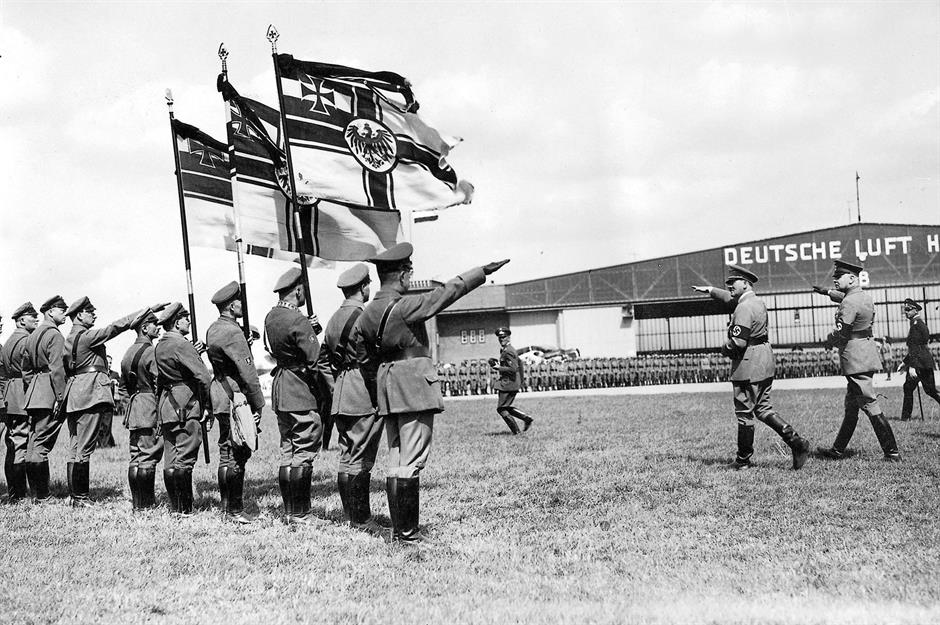
Sobering photos like this one show that Hamburg Airport was used by the Nazis in World War II. But unlike a lot of other German airports, Hamburg Airport emerged from the war relatively unscathed.
It played a vital role in the Berlin Airlift in 1948 and 1949, serving as a take-off point for the famous Rosinenbombers ('candy bombers'). These transport planes ferried much-needed supplies into Berlin, which was under a Soviet blockade, but their pilots would also drop sweets for the city's children, attached to tiny parachutes.
Hamburg Airport, Germany
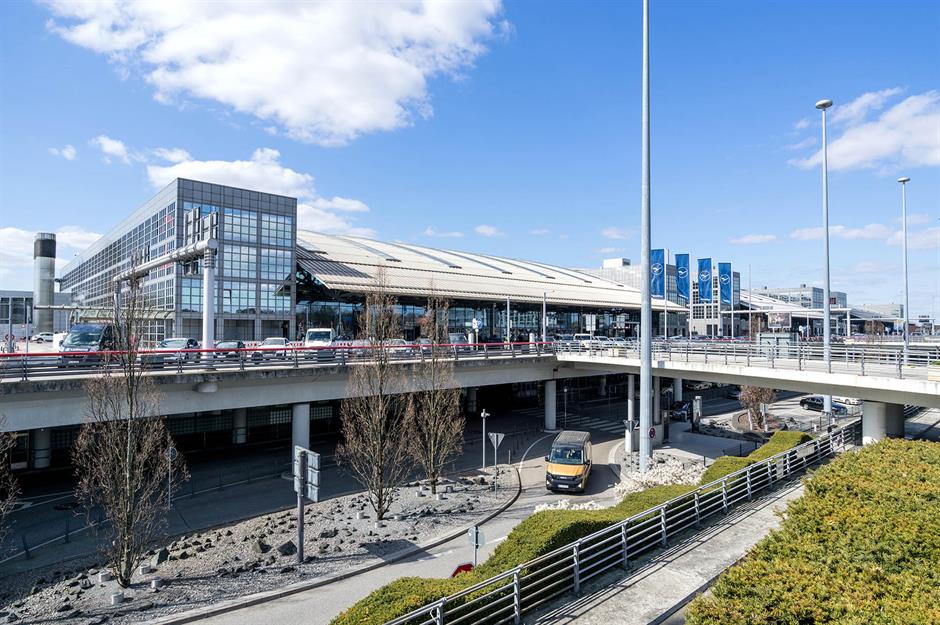
In 1920 – the year records began – Hamburg Airport served 241 passengers. Over a century later, in 2024, the airport handled nearly 15 million passengers. In November 2016, its official name became Hamburg Airport Helmut Schmidt, in honour of the former German chancellor.
One of Hamburg’s greatest 20th century sons, Schmidt championed closer European ties and refused to cut West Germany’s welfare programme during the recession of the early 1980s. There's an exhibition on his life and work in Terminal 2.
Sydney Kingsford Smith Airport, New South Wales, Australia

Sydney’s international airport is named after famous Australian aviator Charles Kingsford Smith (pictured here is his famous plane, the Southern Cross). The airport started life as a paddock on the shores of Botany Bay, until another pioneering aviator, Nigel Love, saw its potential and leased the 140-acre site to start a fledgling aviation business.
On 19 November 1919, he took his first paying passenger up in a two-seater Avro 504K biplane to film Sydney from the air. To this day, it remains one of the oldest continually operating airports in the world.
Sydney Kingsford Smith Airport, New South Wales, Australia
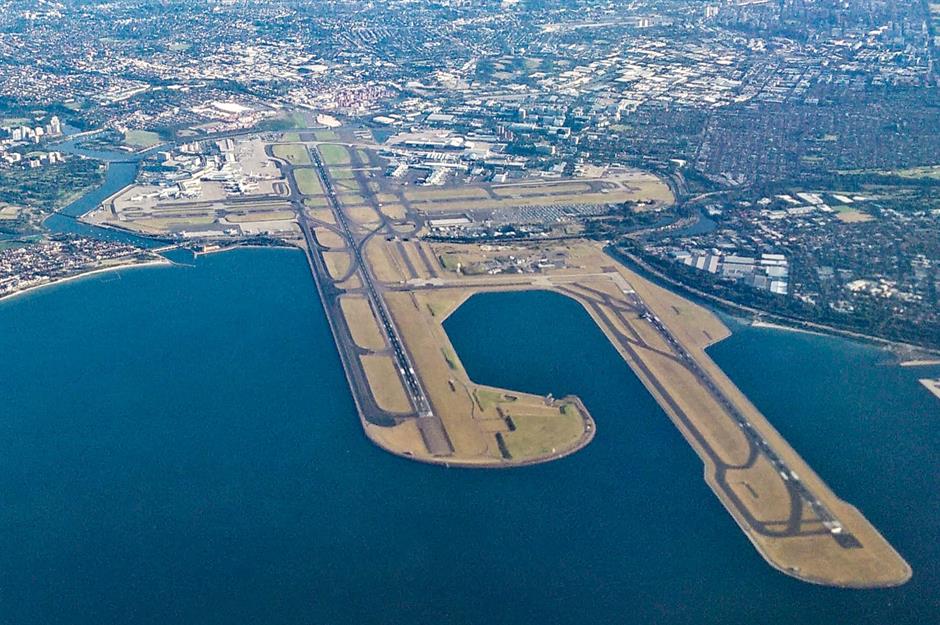
When Love’s lease expired in 1923, the Australian government acquired the site, with regular commercial flights commencing a year later. Its two gravel runways were eventually paved and, in 1970, a new international terminal was opened by the late Queen Elizabeth II.
In 1994, a third runway opened amid great controversy. Jutting out into Botany Bay and running parallel to an existing runway, it increased both the airport’s capacity and the aircraft noise over the inner-city suburbs.
Sydney Kingsford Smith Airport, New South Wales, Australia
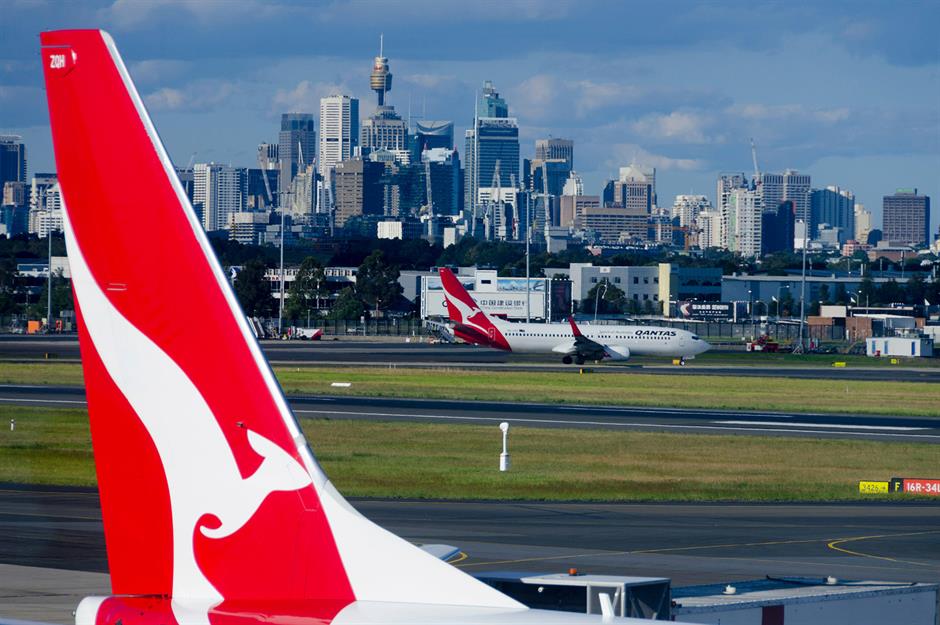
Just five miles (8km) from Sydney’s CBD, Kingsford Smith Airport’s convenient location is both a blessing and a curse. For visitors, the famous Opera House and Harbour Bridge are less than 20 minutes away by train.
But with demand for aviation services expected to double over the next 20 years, it also means that the airport is unable to expand to cope. A new airport named after female Australian aviation pioneer Nancy-Bird Walton is expected to open in late 2026.
Minneapolis-St Paul International Airport, Minnesota, USA
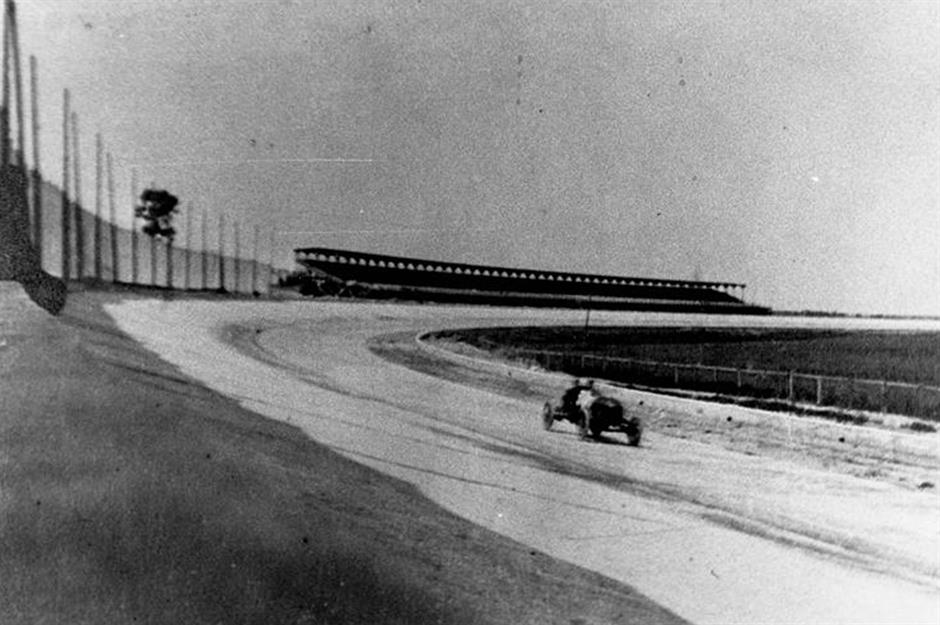
Minneapolis-St Paul International Airport traces its origins to the demise of the Twin Cities Motor Speedway (pictured here in 1916). After the speedway went bankrupt in 1917, civic leaders saw an opportunity to develop the infield of the concrete track into an airfield to attract more airmail service.
The 160-acre site, renamed Wold-Chamberlain Field to honour two Minneapolis-born aviators killed in World War I, steadily developed over the next decade.
Minneapolis-St Paul International Airport, Minnesota, USA
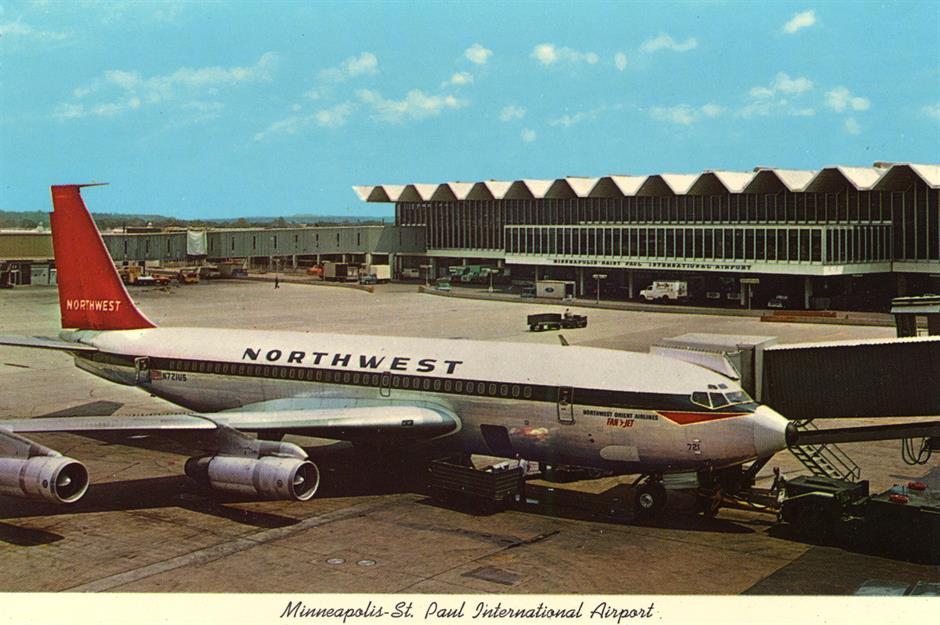
In 1926, the city of St Paul started developing an airfield closer to its downtown, but Wold-Chamberlain Field was equidistant from both cities, so presented a more attractive investment opportunity.
The opening of Terminal 1, with its signature folded-plate roof, in 2016 modernised the travel experience for passengers. One of the new design features placed passenger services on the upper level and baggage claim and transportation services on the lower level.
Minneapolis-St Paul International Airport, Minnesota, USA
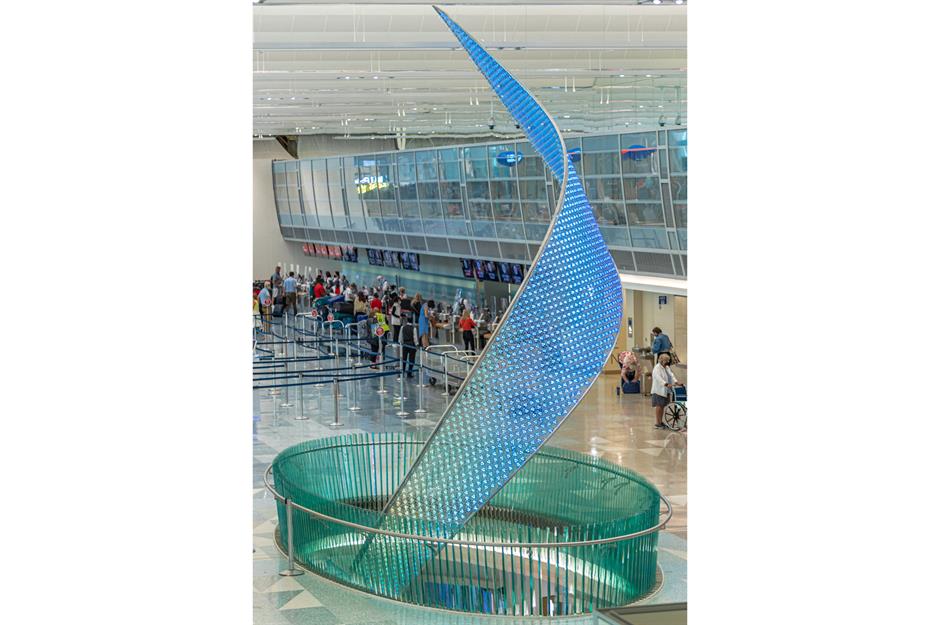
Today, the airport regularly features in the top 20 busiest in North America. It was recently named the best mega airport in the JD Power 2024 North America Airport Satisfaction Study. Last year, it handled 37.2 million passengers.
One reason for its popularity is its Arts and Culture Program, which showcases public art. The Aurora (pictured) in the Terminal 1 departures hall is a particular favourite – designed to represent the Northern Lights, its wispy, ethereal colours change whenever someone walks underneath.
Comments
Be the first to comment
Do you want to comment on this article? You need to be signed in for this feature